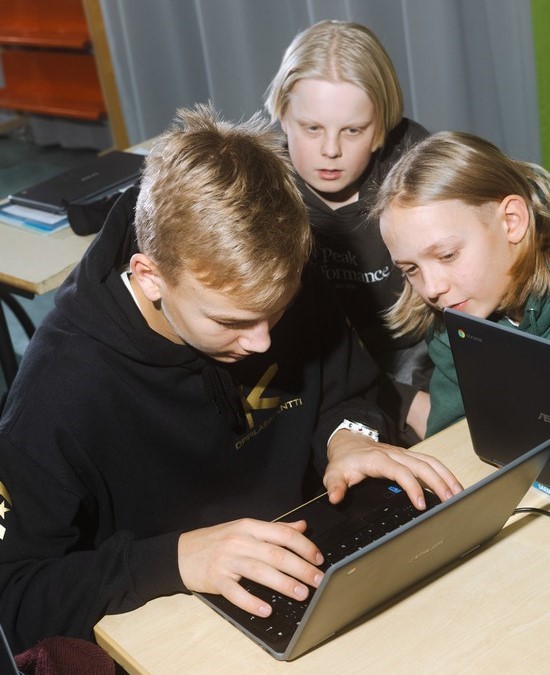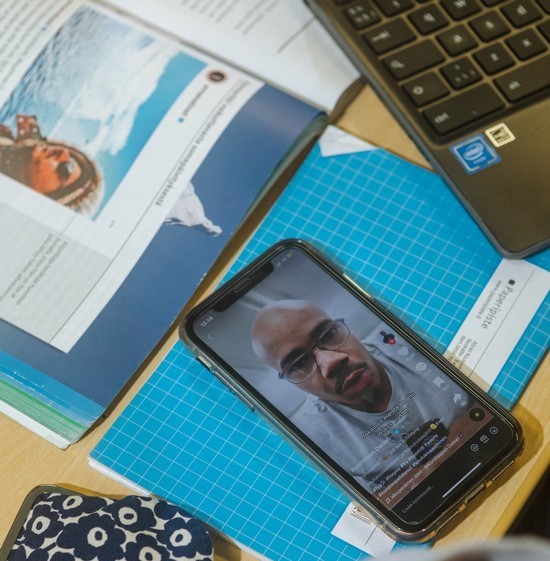A typical lesson that Saara
Martikka, a teacher in Hameenlinna, Finland, gives her students goes like this:
She presents her eighth graders with news articles. Together, they discuss:
What is the purpose of the article? How and when was it written? What are the
author’s central claims?
اضافة اعلان
“Just because it’s a good thing or it’s a
nice thing doesn’t mean it’s true or it’s valid,” she said. In a class last
month, she showed students three
TikTok videos, and they discussed the creators’
motivations and the effect that the videos had on them.
Her goal, like that of teachers around
Finland, is to help students learn to identify false information.
Finland ranked first out of 41 European
countries on resilience against misinformation for the fifth time in a row in a
survey published in October by the Open Society Institute in Sofia, Bulgaria.
Officials say Finland’s success is not just the result of its strong education
system, which is one of the best in the world, but also because of a concerted
effort to teach students about fake news. Media literacy is part of the
national core curriculum starting in preschool.
“No matter what the teacher is teaching —
whether it’s physical education or mathematics or language — you have to think,
‘OK, how do I include these elements in my work with children and young
people?’” said Leo Pekkala, the director of Finland’s National Audiovisual
Institute, which oversees media education.
 Olli Seppala, Aatu Aho-Mantila, and Arttu
Hati (left to right) learn about identifying misinformation in class in
Hameenlinna, Finland, on December 8, 2022.
Olli Seppala, Aatu Aho-Mantila, and Arttu
Hati (left to right) learn about identifying misinformation in class in
Hameenlinna, Finland, on December 8, 2022.
After Finland, the European countries that
ranked highest for resilience to misinformation in the Open Society Institute
survey were Norway, Denmark, Estonia, Ireland, and Sweden. The countries that
were the most vulnerable to misinformation were Georgia, North Macedonia,
Kosovo, Bosnia and Herzegovina, and Albania. The survey results were calculated
based on scores for press freedom, the level of trust in society, and scores in
reading, science, and math.
The Finnish methodFinland has advantages in countering
misinformation. Its public school system is among the best in the world.
College is free. There is high trust in the government, and Finland was one of
the European countries least affected by the pandemic. Teachers are highly
respected.
On top of that, Finland’s language is
spoken by about 5.4 million people. Articles containing falsehoods that are
written by non-native speakers can sometimes be easily identified because of
grammatical or syntax errors, Pekkala said.
While teachers in Finland are required to
teach media literacy, they have significant discretion over how to carry out
lessons. Martikka, the middle school teacher, said she tasked students with
editing their own videos and photos to see how easy it was to manipulate
information.
“Just because it’s a good thing or it’s a nice thing doesn’t mean it’s true or it’s valid.”
A teacher in Helsinki, Anna Airas, said she
and her students searched words like “vaccination” and discussed how search
algorithms worked and why the first results might not always be the most
reliable. Other teachers also said that in recent months, during the war in
Ukraine, they had used Russian news sites and memes as the basis for a
discussion about the effects of state-sponsored propaganda.
Finland, which shares an 833-mile border
with Russia, developed its national goals for media education in 2013 and
accelerated its campaign to teach students to spot misinformation in the
following years. Paivi Leppanen, a project coordinator at the Finnish National
Agency for Education, a government agency, said the threat of Russian
misinformation on topics such as Finland’s bid to join NATO “hasn’t changed the
basics of what we do, but it has shown us that this is the time for what we
have been preparing”.
Students young and oldEven though today’s teenagers have grown up
with social media, that does not mean that they know how to identify and guard
against manipulated videos of politicians or news
articles on TikTok. In fact,
a study published last year in the British Journal of Developmental Psychology
found that adolescence could be a peak time for conspiracy theorizing. A
contributing factor could be social media, with its influence over young
people’s beliefs about the world, the study’s authors wrote.
Still, the Finnish government says students
are among the easiest group to reach. Now that programs are in place for young
people, the government is using libraries as centers for teaching older people
to identify online information that is intended to mislead, Pekkala said.
 Students watch TikTok videos as part of an
exercise about fake news at a school in Hameenlinna, Finland, on December 8,
2022.
Students watch TikTok videos as part of an
exercise about fake news at a school in Hameenlinna, Finland, on December 8,
2022.
For teachers of any age group, coming up
with effective lessons can be challenging. “It’s so much easier to talk about
literature, which we have been studying for hundreds of years,” said Mari
Uusitalo, a middle and high school teacher in Helsinki.
The tools to distinguish truthShe starts with the basics — by teaching
students about the difference between what they see on Instagram and
TikTok versus what they read in Finnish newspapers. “They really can’t understand fake
news or misinformation or anything if they don’t understand the relationship
between social media and journalism,” she said.
During Uusitalo’s 16 years as a teacher,
she has noticed a clear decline in reading comprehension skills, a trend she
attributes to students spending less time with books and more time with games
and watching videos. With poorer reading skills and shorter attention spans,
students are more vulnerable to believing fake news or not having enough
knowledge about topics to identify misleading or wrong information, she said.
“They really can’t understand fake news or misinformation or anything if they don’t understand the relationship between social media and journalism.”
When her students were talking this summer
about leaked videos that showed Finland’s prime minister, Sanna Marin, dancing
and singing at a party, Uusitalo moderated a discussion about how news stories
can originate from videos circulating on social media. Some of her students had
believed Marin was using drugs at the party after watching videos on TikTok and
Twitter that suggested that. Marin denied having taken drugs, and a test later
came back negative.
Uusitalo said her goal was to teach
students methods they could use to distinguish between truth and fiction. “I
can’t make them think just like me,” she said. “I just have to give them the
tools to make up their own opinions.”
Read more Technology
Jordan News







